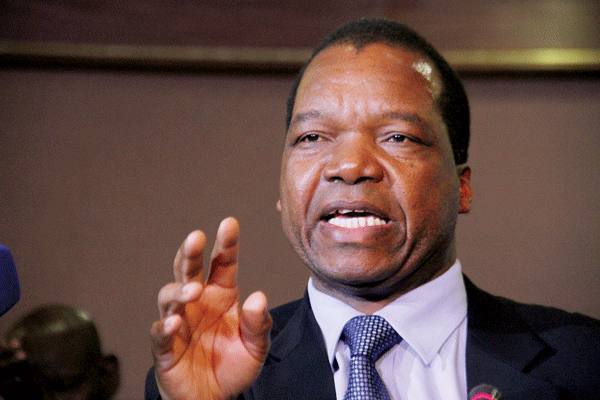|
Getting your Trinity Audio player ready…
|
By Tinashe Eric Muzamhindo
There are dangers in the international financial system that defines the characteristics of economies based on the superficial conclusions of organisations deemed as thinktanks yet they are peddling propaganda.
It is an unimaginable spectacle that leaves debates around the political economy of the finance sector tilted to the side of the hegemonic north. Reasons for such is the western view of interpreting the economy using the Adam Smith liberal politics view. It is a one-sided affair to discredit how other non-Smithian economists view the subject of the political economy.
As such, recent assertions by Global Finance have put the ‘international thinktank’ in the spotlight after initial claims had been revised by the institution and proving it had set an incorrect position from the onset. According to the report, the Zimbabwe Central Bank Chief Dr. John Mangudya is the least ranked governor according to their world rankings.
There are contradictions in the political economy of wealth creation and the finance position carried by Global Finance as the International Monetary Fund (IMF) has commended the country for jumpstarting growth in the face of economic adversity. A combination of unfortunate factors, pressure from the hegemonic North, and prescriptive politics of finance have not been considered in arriving at the Global Finance conclusions.
Zimbabwe‘s economy is on the road to recovery after years of turmoil and also surviving setbacks necessitated by the recession. The World Bank commends the growth projections of 3,9% in 2021 and 6% by IMF, another western-linked Bretton Woods institution. To correct financial anomalies, the apex bank has made indications that to heal the wounds of the financial abnormalities, commercial banks need to help the recovery track by encouraging their clients to invest in government securities. This is a framework Global Finance turns a blind eye to.
Furthermore, the Reserve Bank of Zimbabwe under the stewardship of Dr. Mangudya has launched a regulatory sandbox framework to encourage innovations in the fintech and further liberalised the operations of the bureau de change to promote financial inclusion. This has been done to enhance macro-economic stability, to which in the context of Zimbabwe there are strides of improvement. The recent reported an improved shift from D in 2020 to C in 2021.
A rating of C is a commendable improvement given where Zimbabwe is coming from and the environment that the country is operating in. There is hostility towards Zimbabwe in the international financial market system that has not been favourable to the African country.
The report ranking also takes into account the level of inflation and measures taken by the Central Bank in the past to stabilise the currency and economy in taming inflation, currency volatility, banking sector stability, and other financial policies and products to support the growth of the economy.
As a result, the rating of 2020 reflected the instability typified by peak inflation of 83.7% in Zimbabwe. Commendably, the report recognises the great effort by stakeholders and members of the Monetary Policy Committee working to reduce inflation from 83.7% to 60% in one year in 2021.
By addressing inflationary pressures, what therefore is required is sustaining these reductions to regional levels. Dr. Mangudya is not bringing frameworks for his own doing, but they are measures the Central Bank hopes commercial banks will have a buy-in to also promote the liberal forex exchange system.
Based on Global Finance findings, Dr. Mangudya is not the worst Central Bank Governor in the world, but Venezuela’s Calixto Ortega who got an “F”. Both Zimbabwe and Venezuela are suffering financial and economic strangulation at the instigation of USA sanctions and plans of economic sabotage. The financial field is therefore not level as some are working through fierce opposition. For a long time, Venezuela has been in the doldrums.
On the other hand, Zimbabwe is recovering from economic turmoil that had been necessitated by the policies of the Robert Mugabe era and also the stringent approach of the Bretton Woods institutions. Currency reforms under Dr. Mangudya are becoming an achievable objective as Zimbabwe now depends heavily on its local currency.
The priority to achieving that is propagating, improving production and productivity in sustaining the macro-economic trajectory of growing the economy by 7.4 % in 2022 and above 5% thereafter as envisaged in the NDS1.
In this regard, despite negative propaganda from the finance ‘think tanks’, the Central Bank affirms its position in the continuance of ensuring sound monetary policy positions, as well as apt financial conditions through its conservative monetary targeting framework.
Furthermore, the measures and policies being aimed at the Central Bank are to ensure the accomplishment of the Bank’s 2022 key strategic focus areas of ensuring exchange rate and price stability, the smooth functioning of the interbank foreign exchange market, and providing support to economic activity without endangering the important objective of becoming an upper-middle-income country by 2030.
All these are elements the global financial order has not been talking of regarding Zimbabwe yet these are changes that have been witnessed on the economic front.
The economy has already taken a different course of direction from what the Global Finance perspective says. A lot has been done to restore economic value in local production chains and instill currency stability.
Key major highlights
1. Positivity is the way to go
2. Mindset Transformation
3. Let’s build nations
4. Let’s join hands for Economic Growth
5. Solution Focused Thinking
Tinashe Eric Muzamhindo is the Head of Zimbabwe Institute of Strategic Thinking – ZIST and can be contacted at tinamuzala@gmail.com
